With so many types of mushrooms at our fingertips at the grocery store and farmers’ markets, it’s so easy to experience the incredible flavors and versatility of mushrooms. From woodsy shiitakes and hearty cremini, to versatile white button and seasonal gems (like morels), the options and recipes are endless. This article showcases the characteristics and uses of 18 of the most common types of edible mushrooms.
1. White Button Mushrooms
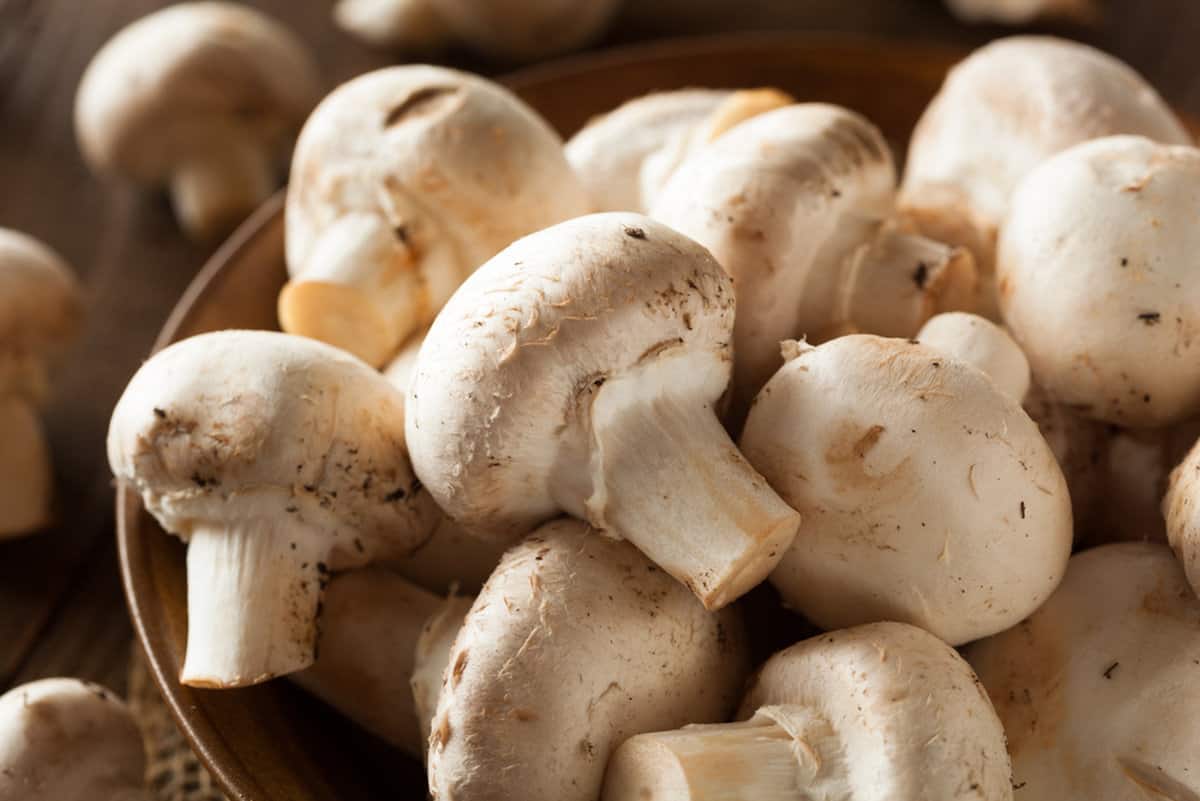
The most common and most mild mushroom is the white button mushrooms. Button mushrooms are soft in texture and can be eaten both raw and cooked. Use them in soups, salads, pizza, pasta and lasagna (to name a few).
Use button mushrooms in this Vegetarian Bolognese! Or, make these Mushroom Veggie Burgers!
2. Cremini Mushrooms
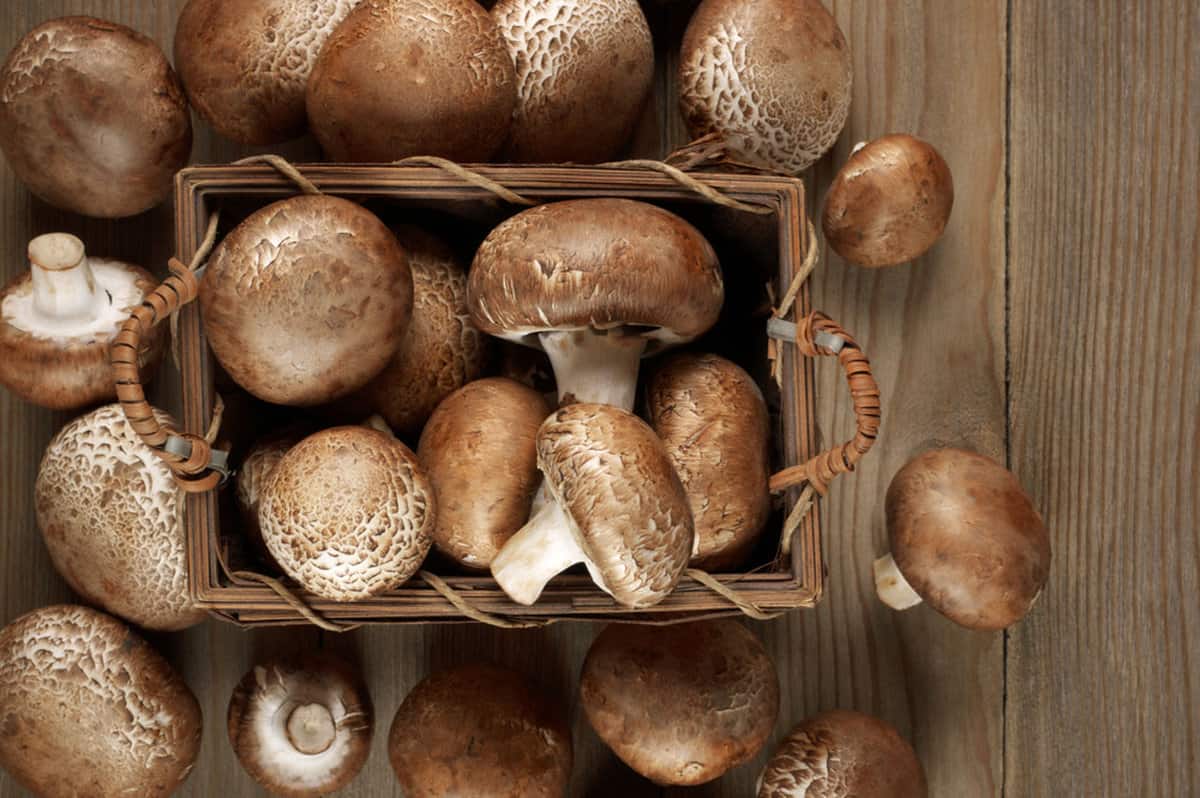
Often labeled as “baby bellas,” crimini mushrooms are a young variety of the portobello. They are interchangeable in most recipes with their relative the white button, but more firm in texture, darker in color and even more flavorful. They’re often a bit more expensive than white buttons, but they’re worth the added expense.
They’re wonderful seared and served over pasta or stuffed and served as an appetizer.
3. Portobello Mushrooms
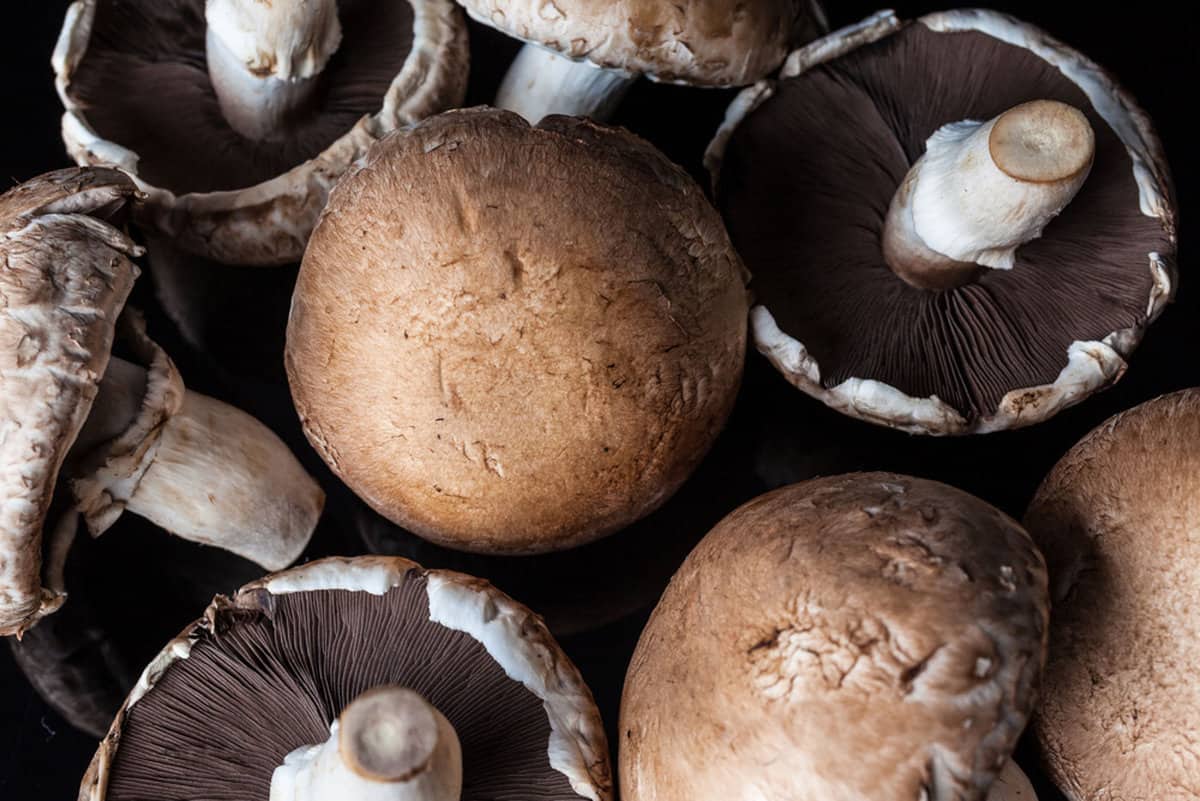
Portobello mushrooms are large in size (think the size of your hand), are incredibly “meaty,” and rich in flavor. Since they’re dense and hold up to a variety of cooking methods (grilling, broiling and roasting), they make a great vegetarian meat alternative.
Try stuffing them! You can also use them as a “bun” for burgers.
4. Shiitake Mushrooms
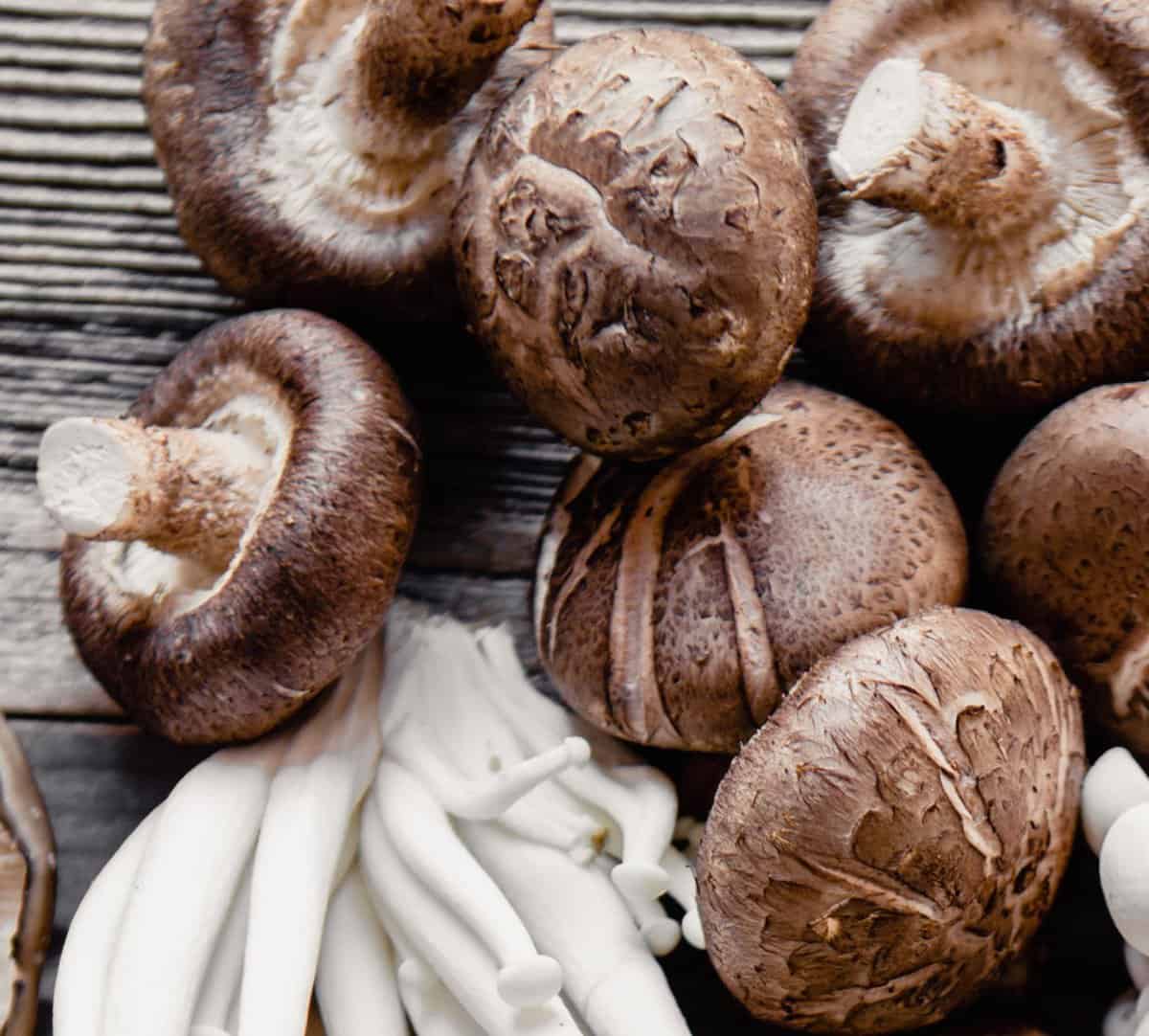
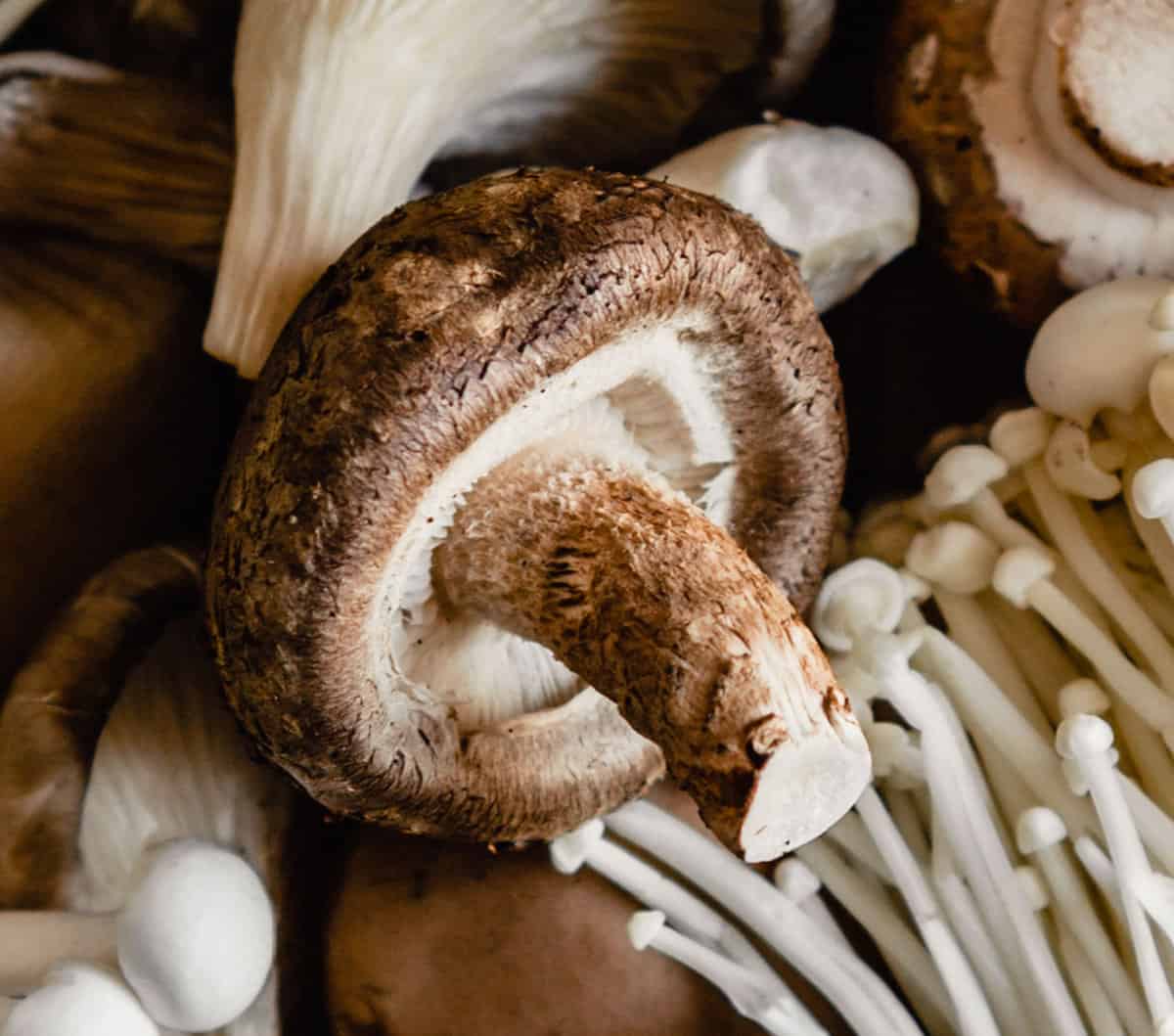
Idyllic in shape, the shiitake mushroom has a slender stem and a rounded cap that slightly curves under. Fresh shiitakes have an earthy flavor that bodes well for soups and sauces. Discard stems prior to cooking. Dried shiitakes are also a common ingredient, they are extremely intense in earthy, woodsy flavor.
Make these Shiitake and Thyme Crostini! Or use them in this creamy, cozy mushroom soup! If you’re looking for a hearty yet elegant meal, make our creamy Mushroom Sauce for Steak!
5. Oyster Mushrooms
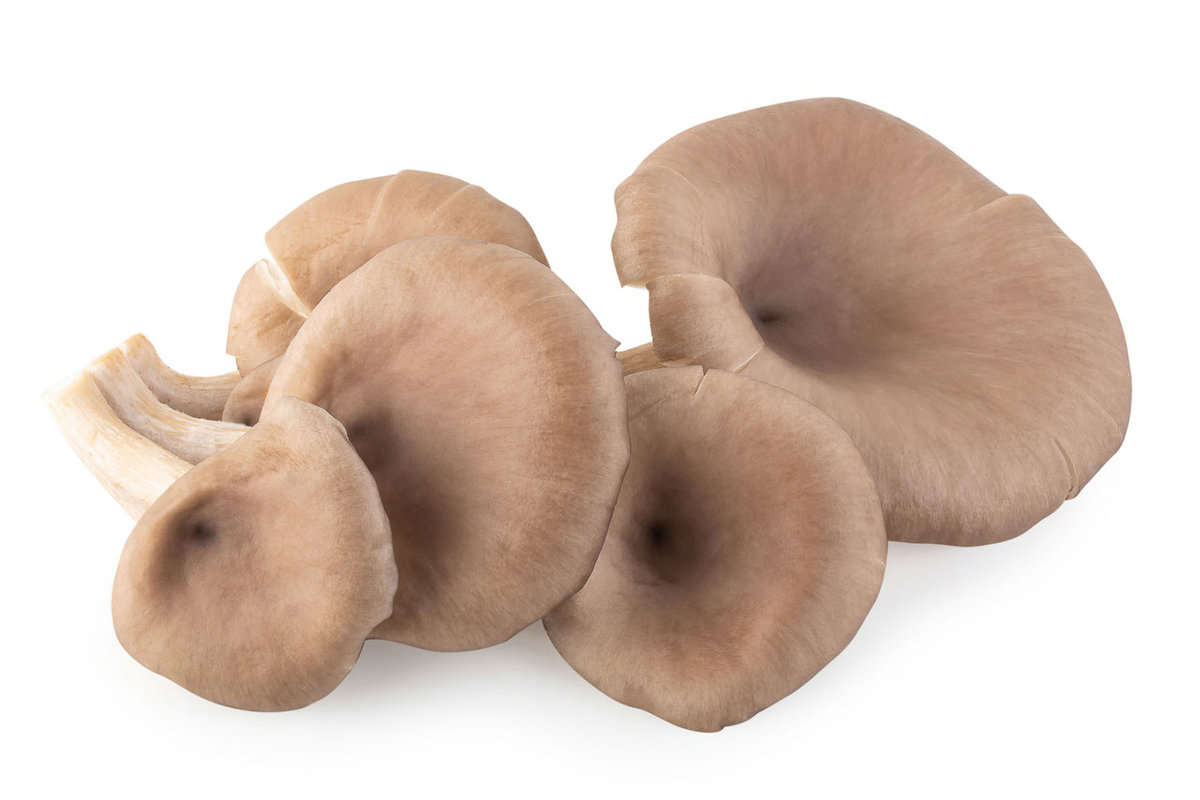
Their name is no mistake, oyster mushrooms look, well, like oysters. But imagine oysters in a cluster. Very tender and chewy in texture, oyster mushrooms are light in color and have a mild almost sweet aroma and flavor. Once cooked, oyster mushrooms take on a meaty texture. Use oyster mushrooms in soups, sauces and stir-fries.
Add some oyster mushrooms to this Hungarian Mushroom Soup!
6. Porcini Mushrooms
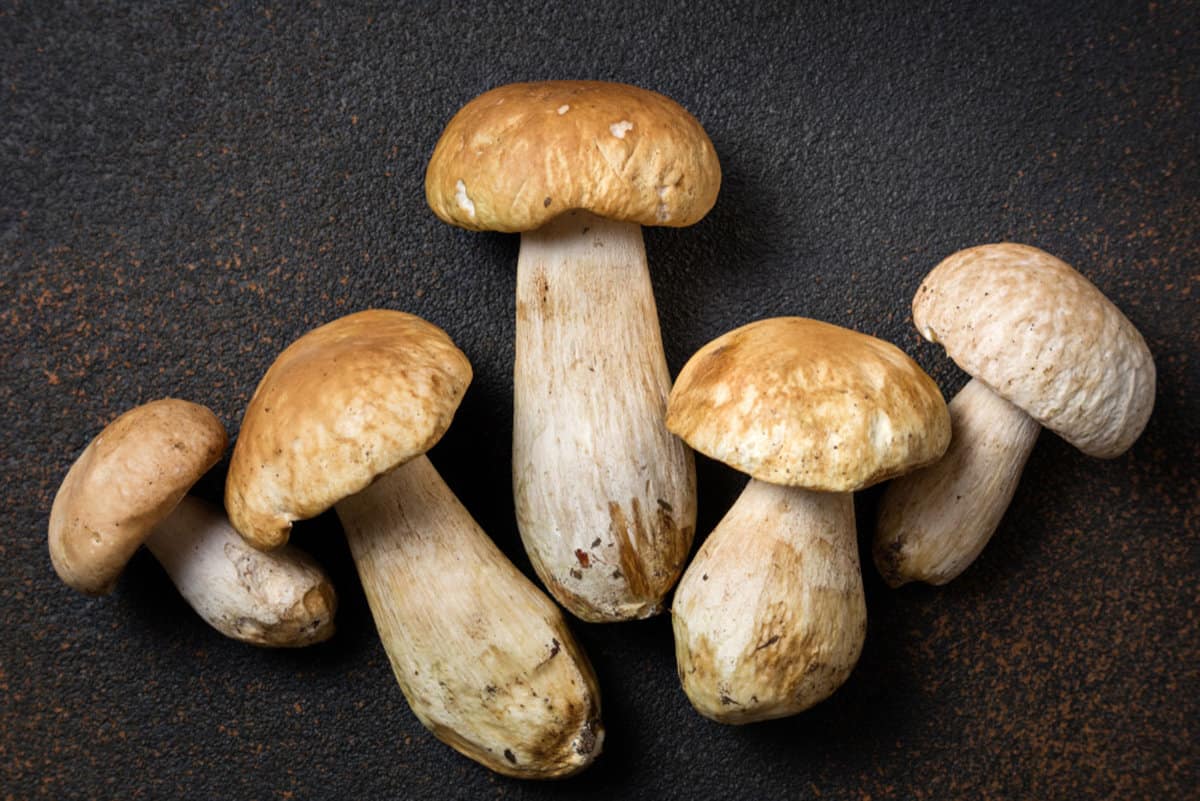
One of the most sought-after types of edible mushrooms, this reddish-brown fungi can be nearly impossible to find fresh, though they can easily be found dried. Porcini mushrooms have a deep, intense woodsy flavor and are smooth in texture.
If you can find them fresh, snatch them up! (Though you may need to be in Italy or France just to get your hands on some fresh porcini mushrooms.) Otherwise, turn to dried for adding tons of flavor to soups, broths and sauces. Buy dried mushrooms here! Then put them to use in our Beef and Barley Soup—they add incredible depth of flavor!
7. Chanterelle Mushrooms
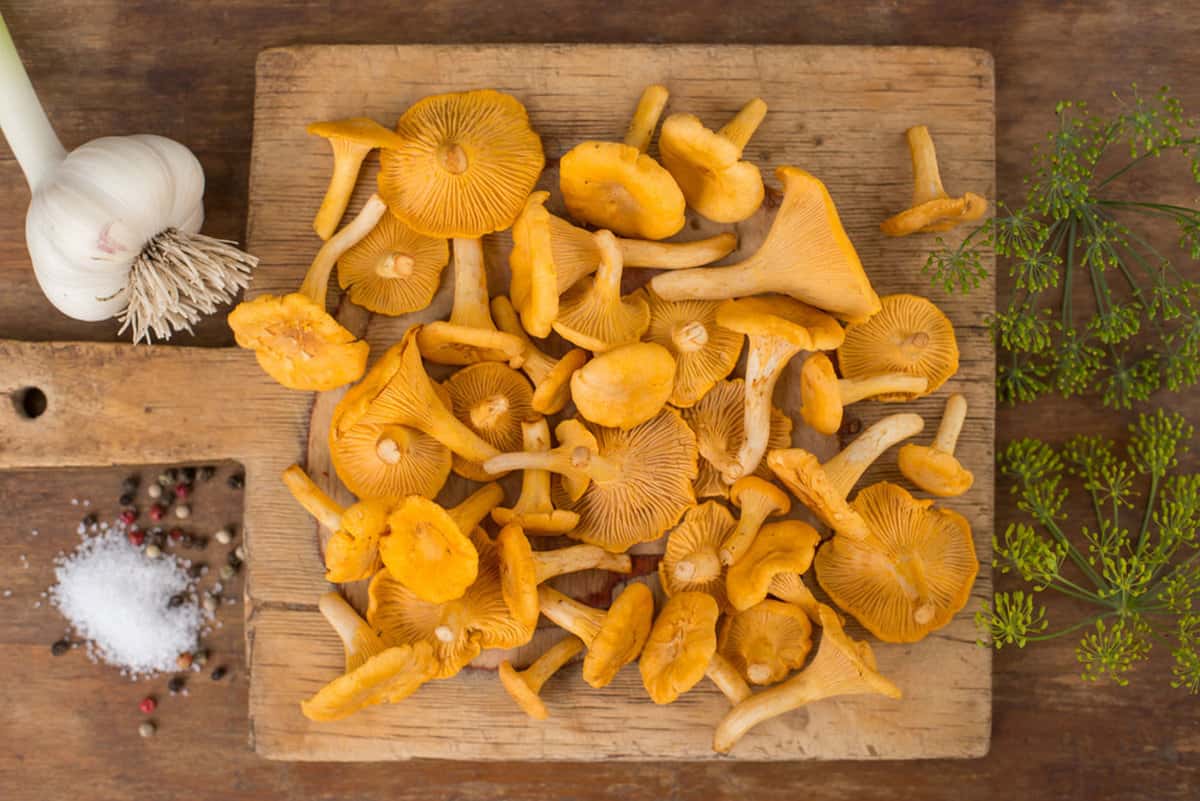
This wild mushroom is a beloved variety. Most often foraged for, their gorgeous golden color and firm meaty texture adds to their appeal. They have a sweet fruity scent, nutty flavor, and are trumpet-like in shape with a gilled texture running up the stem and under the cap. These mushrooms are stunning!
Simply sauté chanterells and serve with any kind of meat, or stir into a cream sauce.
8. Morel Mushrooms
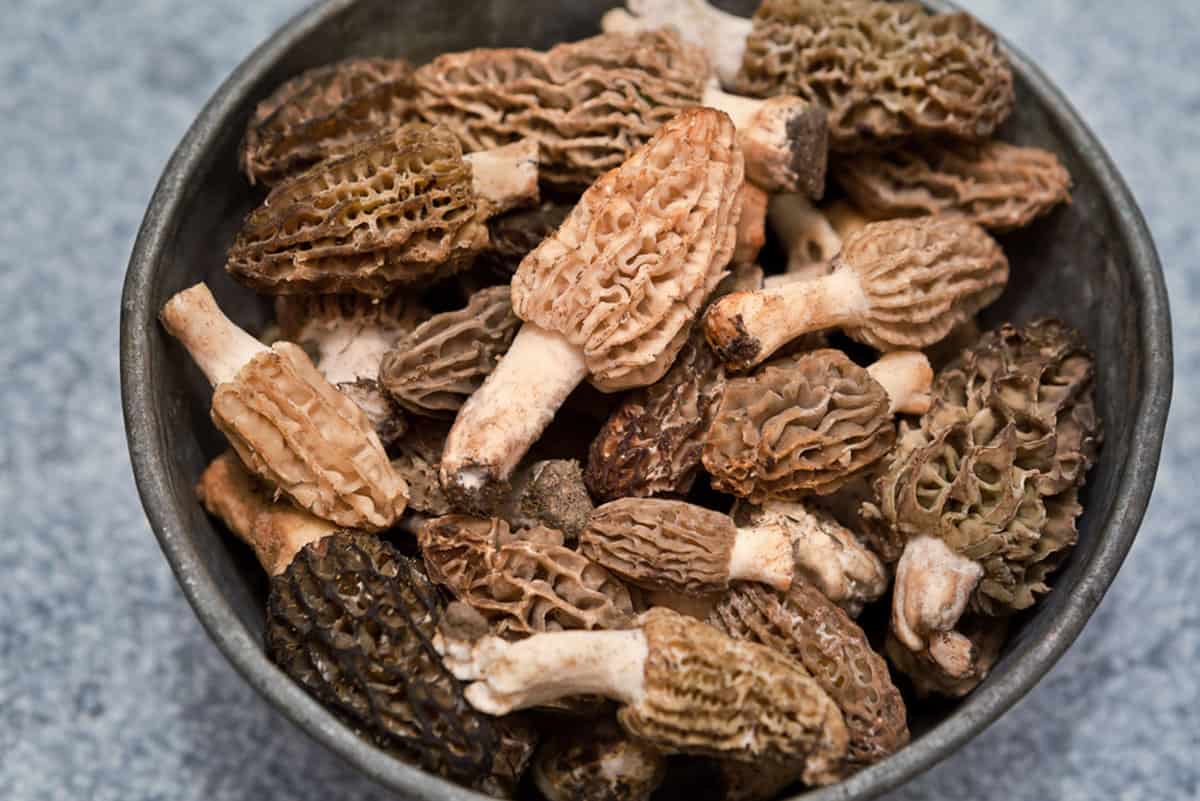
A sought-after spring treat in the Midwest and West, the morel mushroom is bold in flavor and somewhat spongey in texture. They have a cone-like shape and are best sautéed in butter, fried, or cooked in a creamy sauce. Look for Morel mushrooms at your local Farmers’ Market in March or April, or forage for them yourself!
Swap morels in for the shiitake mushrooms in this mushroom crostini!
9. Beech Mushrooms
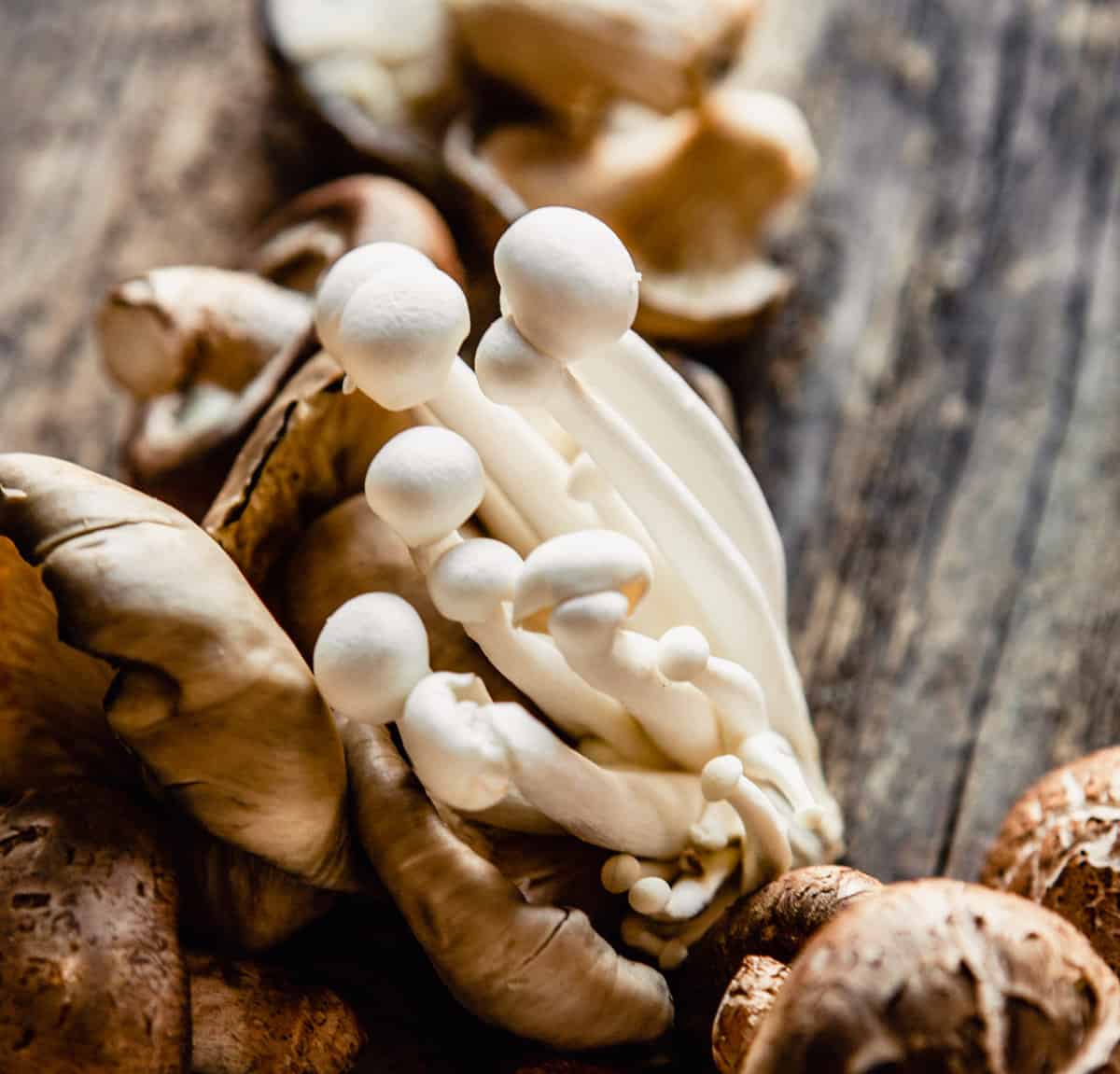
With long slender stems and small caps, these clusters of mushrooms are great for brothy soups or stir fries. Although they can be eaten raw, cooking helps lift the bitter flavor. You can often find White Beech mushrooms at your local Asian market.
I add these to my Hungarian Mushrooms soup for added texture!
10. Enokitake/Enoki Mushrooms
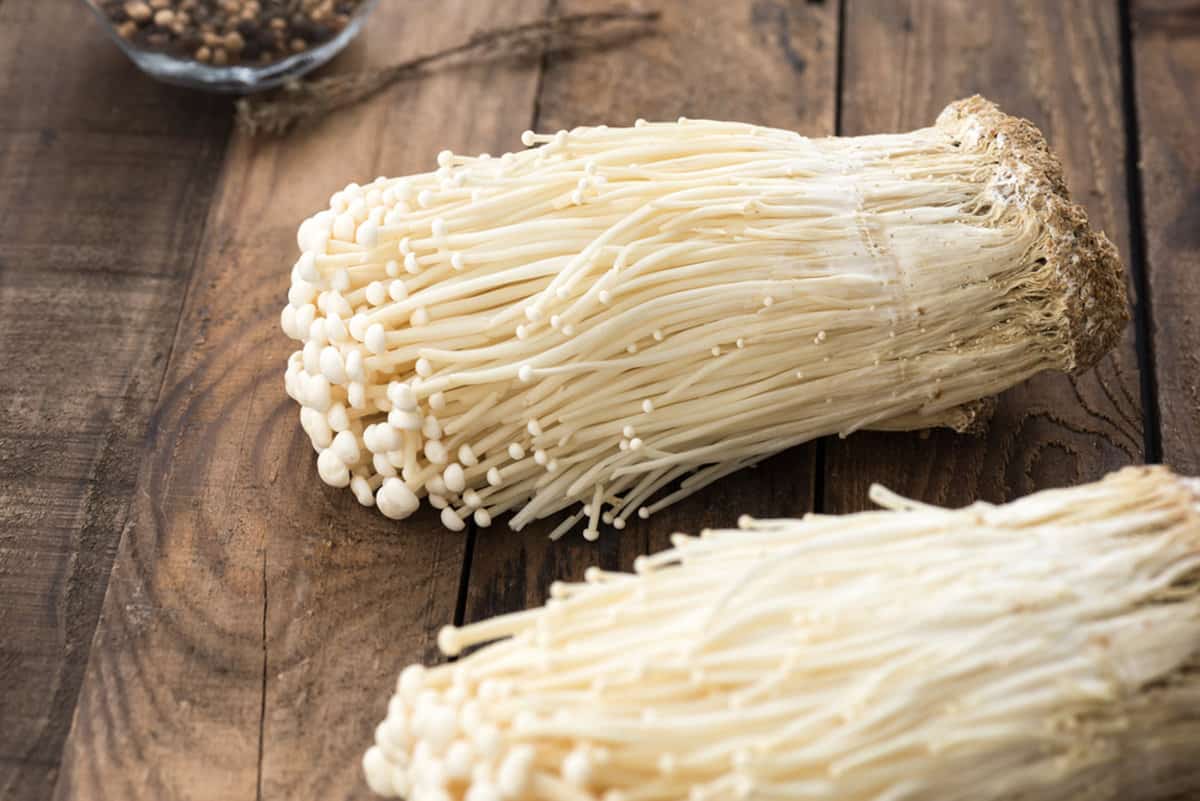
These noodle-like mushrooms are light white with an almost opaque hue. They feature small shiny caps and are delicious fried, used in pho or ramen, and even as a noodle alternative. Look for Enokitake mushrooms at your local Asian market.
Try Enokitake mushrooms in this Weeknight Pho!
11. Shimeji Mushrooms
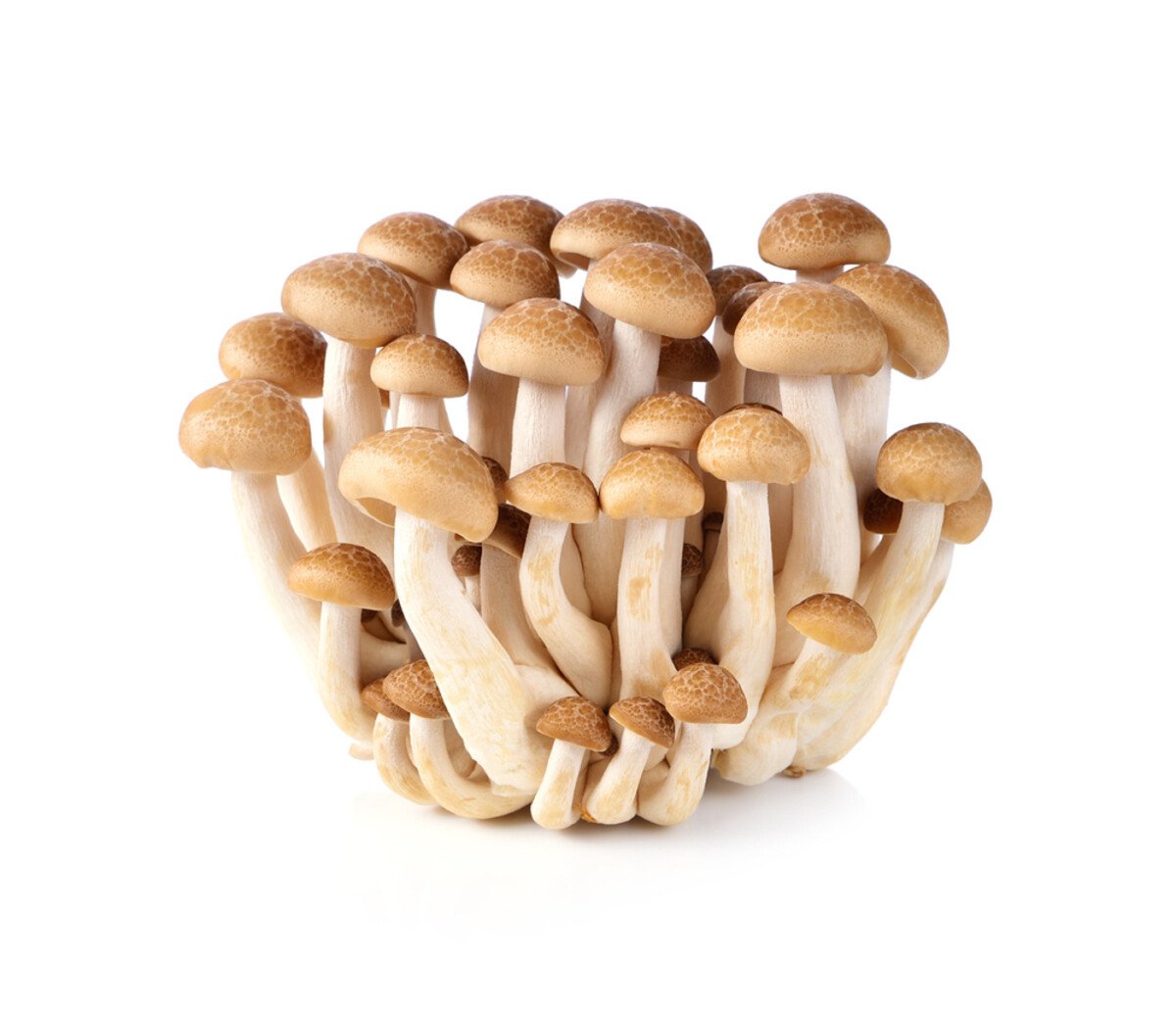
These mushrooms come in clusters and feature both chunky stems and chunky tops. It’s best to eat these mushrooms cooked as they are fairly bitter when eaten raw. Use them in stir-fries, soups, and sauces.
Learn what to look for when buying mushrooms, how to store them, wash them, and how to cook them!
12. Maitake (Hen of Woods) Mushrooms
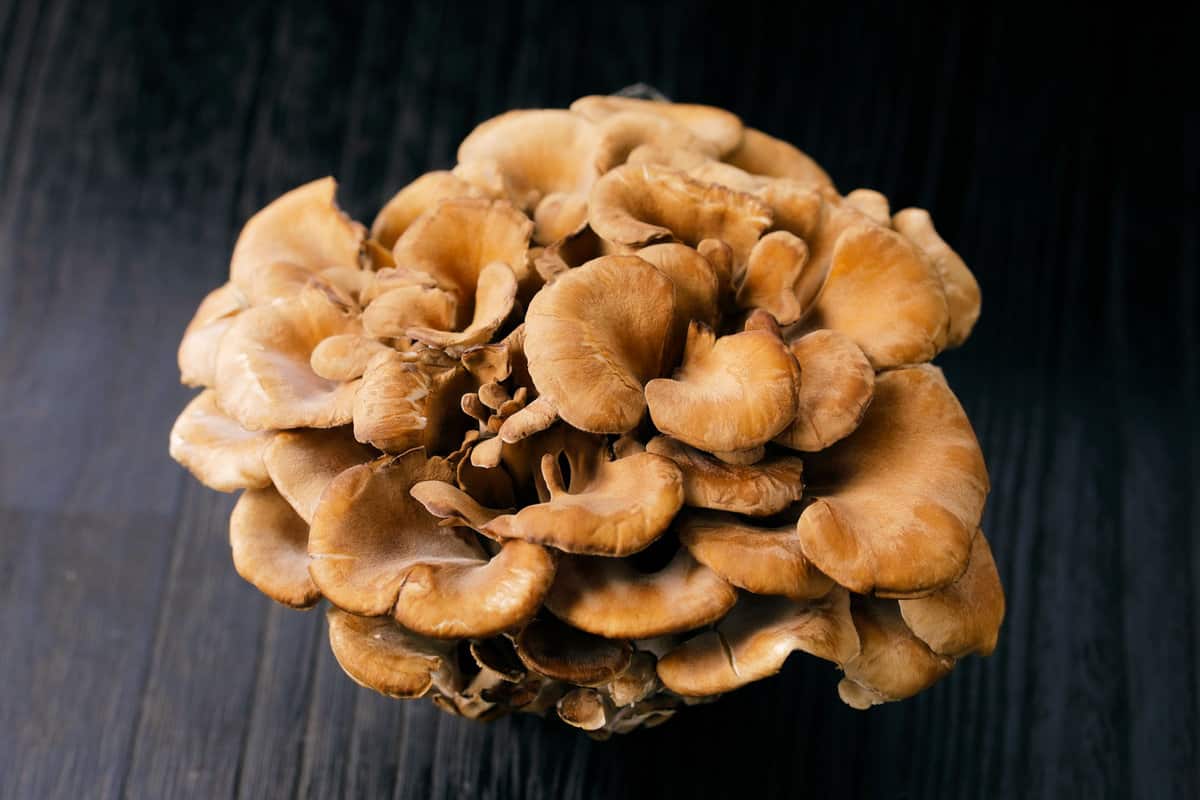
Another “cluster” variety, this type of edible mushroom resembles a head of cabbage. They have a unique earthy, gamy flavor and are soft in texture.
Slice into “steaks” and sear them for a super savory, meaty dish!
13. King Trumpet/King Oyster Mushrooms
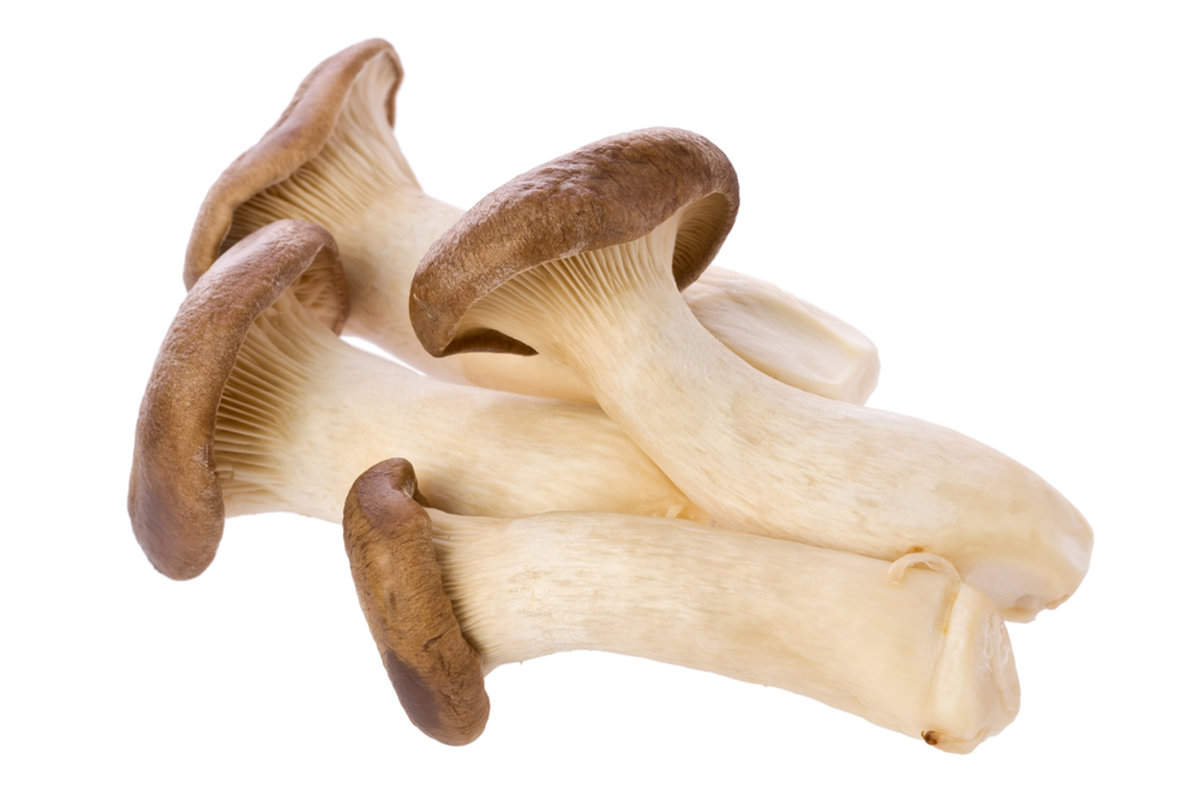
Largely sought after for their meaty stems, King Trumpets (also referred to as king oyster mushrooms) have thick white stems and stout brown caps. In their raw form they have little flavor, but once cooked they take on a savory, slightly sweet taste. Cook King Trumpets like you would a good piece of meat—roasted, grilled or sautéed.
Put king oyster mushrooms to use in our pan-seared king oyster recipe. You’ll fall in love with this mushroom immediately! You can also use the stems to make vegetarian king oyster scallops, and they are surprisingly similar in texture to the real thing!
14. Hedgehog Mushrooms
Hedgehog mushrooms, also called sweet tooth mushrooms, are an incredibly unique type of mushroom. They have the classic stem and cap shape but feature hanging strands (or teeth) underneath their cap instead of gills. Hedgehog mushrooms are meaty and savory in flavor and are delicious grilled, sautéed and pickled. We like the idea of grilling or searing these bad boys and dousing in a rich butter sauce, like our Lemon Butter Sauce.
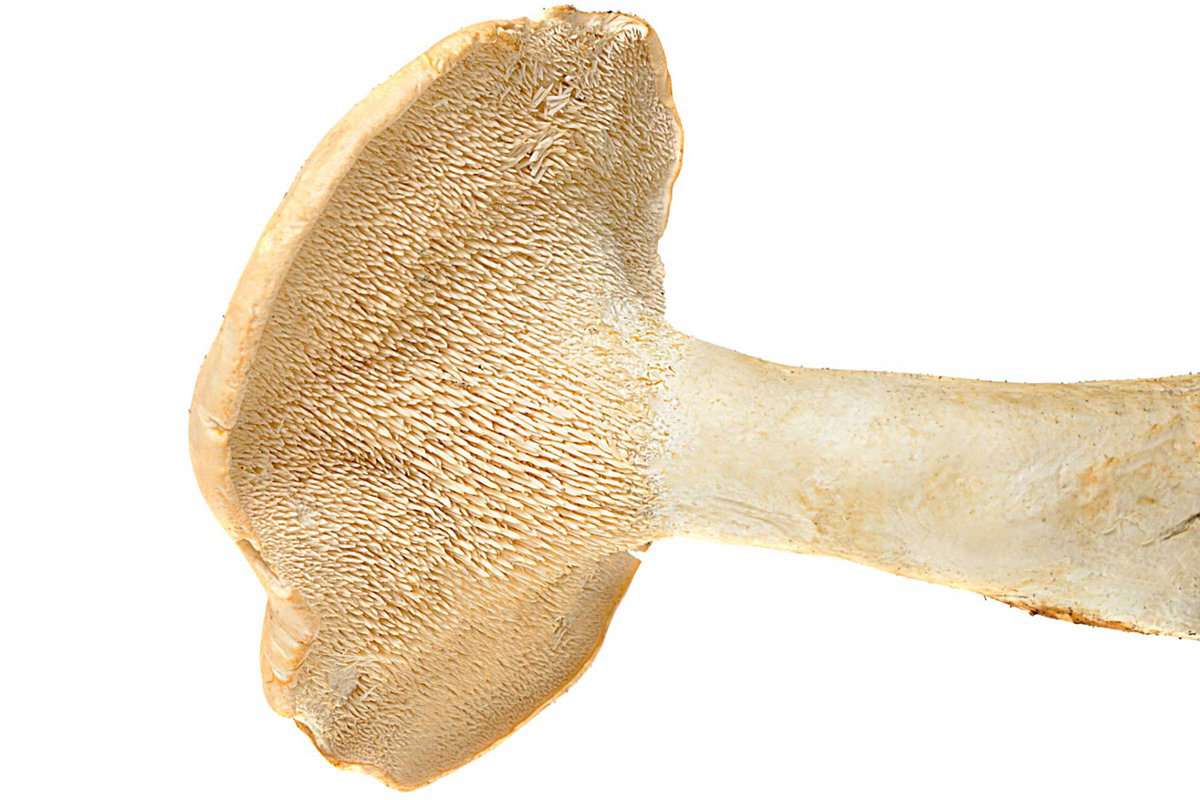
15. Lobster Mushrooms
One of the most unique mushrooms out there, lobster mushrooms are bright orange in color and mild in flavor with a shellfish aroma. This dense mushroom can be cut into chunks, sautéed and added to our Shrimp Bisque, Seafood Soup, or Salmon Curry. We also love the idea of shaving them and layering them in a gratin with potatoes and cream (or cut them into chunks and add them to our cauliflower gratin).
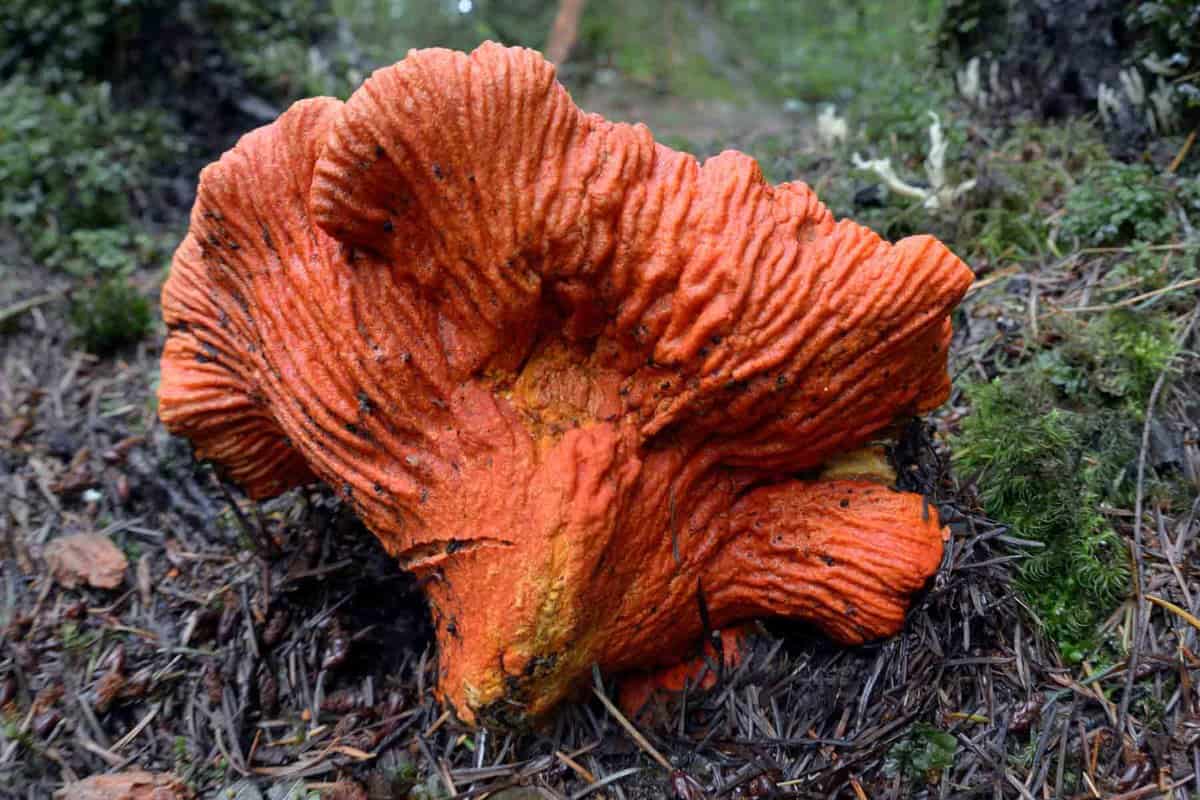
16. Lions Mane Mushrooms
Lions mane is a type of Hericium mushrooms and can be found in a variety of types. The most common are lions mane, coral tooth and bearded tooth. This dense mushroom is mild in flavor (like a white button mushroom) and is slightly nutty in flavor. Cut lions mane into chunks, give it a quick sauté in butter and add it to our shrimp bisque. You can also pull the large mushroom apart into “shreds” and make a mushroom cake (like a salmon patty or crab cake).
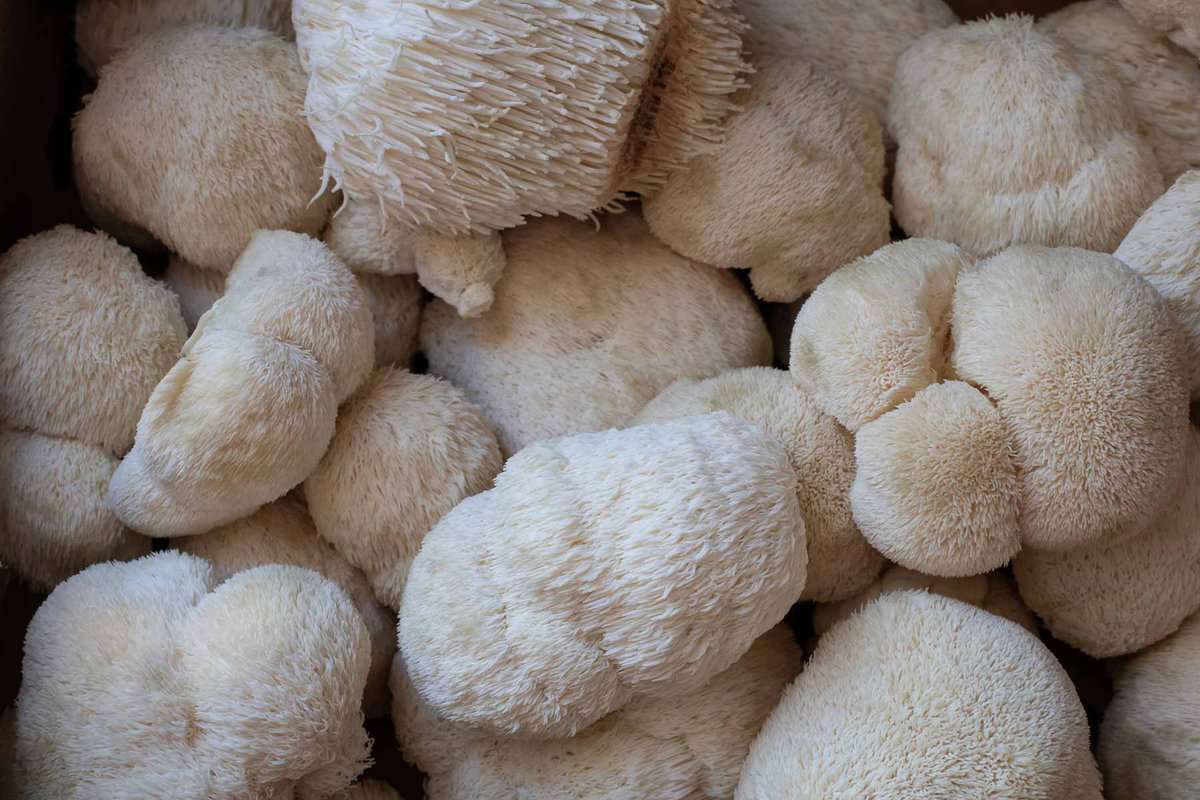
17. Chestnut Mushrooms
These chewy mushrooms are also sometimes called cinnamon cap mushrooms and have become increasingly popular at farmers’ markets. They feature crunchy stems and are nutty in flavor with a mild sweetness. Chestnut mushrooms are widely used in both Japanese and Chinese cuisine and are best when simmered in a brothy soup (like pho), pickled or sautéed in oil and served with a simple herby sauce (we like chimchurri or our green goddess).
18. Black Trumpet Mushrooms
Also sometimes called black horn of plenty, black trumpet mushrooms look like their namesake—a black horn or trumpet. Often called “the poor man’s truffle,” black trumpet mushrooms a have a rich earthy flavor, have a note of sweet stone fruit, and are slightly bitter in their finish. Black trumpet mushrooms are delicious simply sautéed in butter and finished with cream. They cook down quite a bit, but with their bold flavor, they won’t be missed. Try sautéing them and adding them to our truffle pasta.
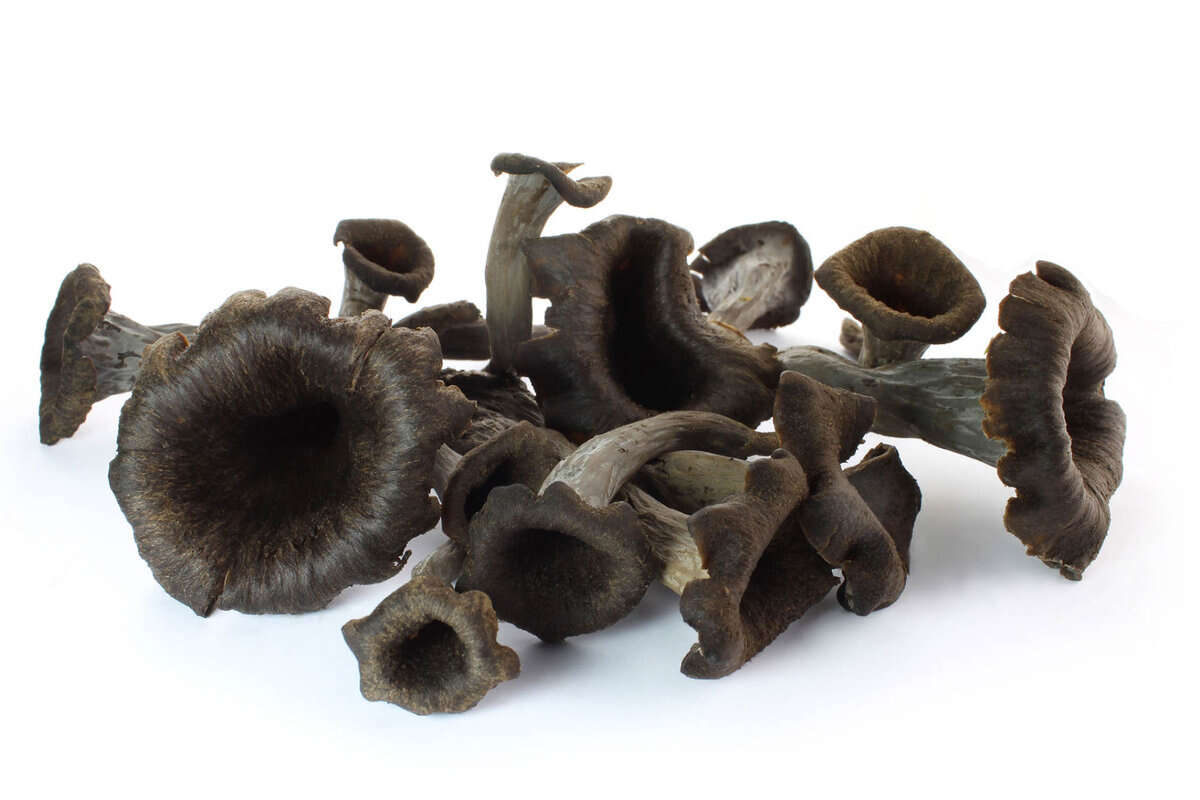
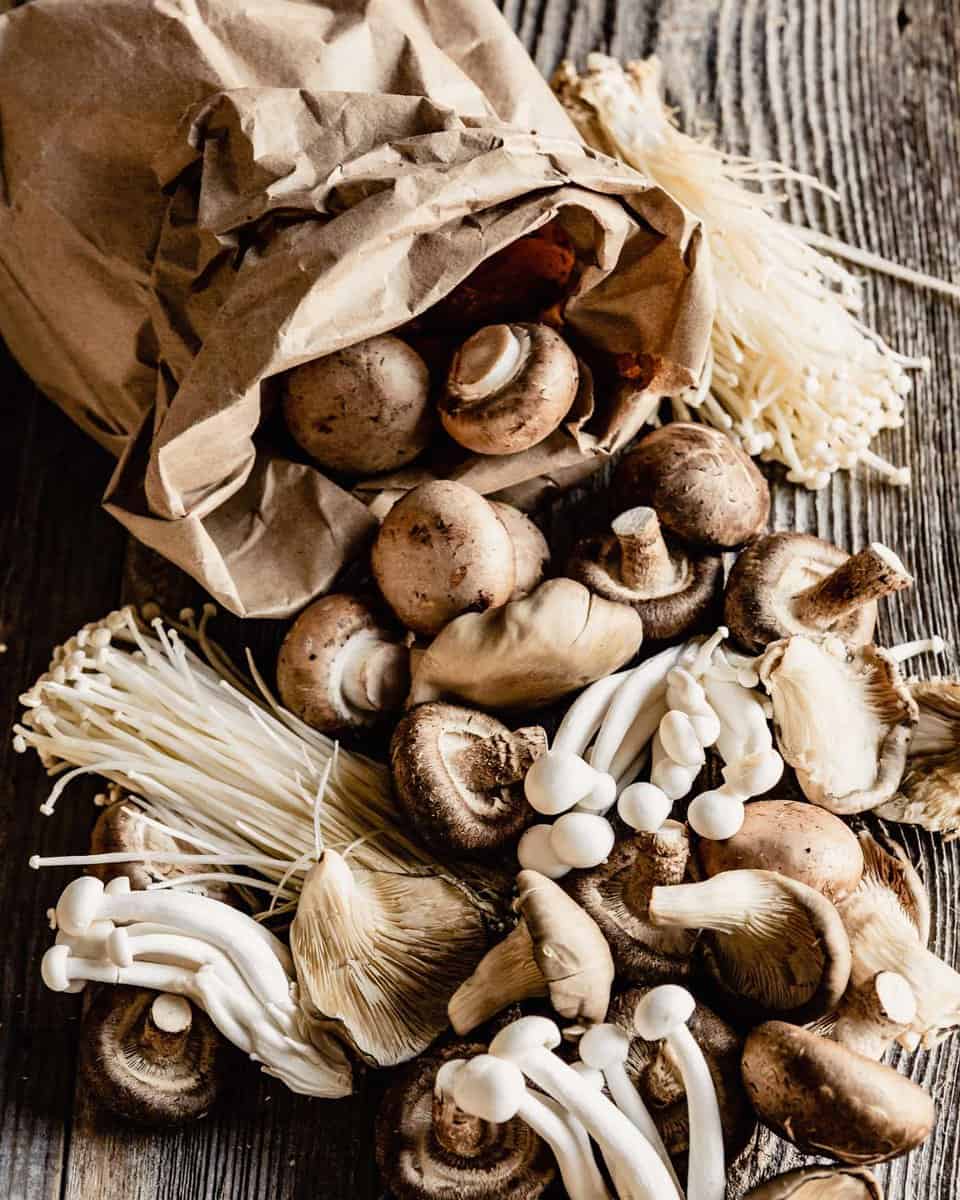
Now that you know the different types of edible mushrooms, it’s time to learn how to cook mushrooms! We cover everything from how to wash them and store them to the nitty gritty of how to sauté, roast and fry mushrooms.
Ready to get cooking? Check out these mushroom recipes!
Resources: America’s Test Kitchen, Vegetables Illustrated. America’s Test Kitchen 2019
This post contains affiliate links at no cost to you, thanks for supporting all things ZK!
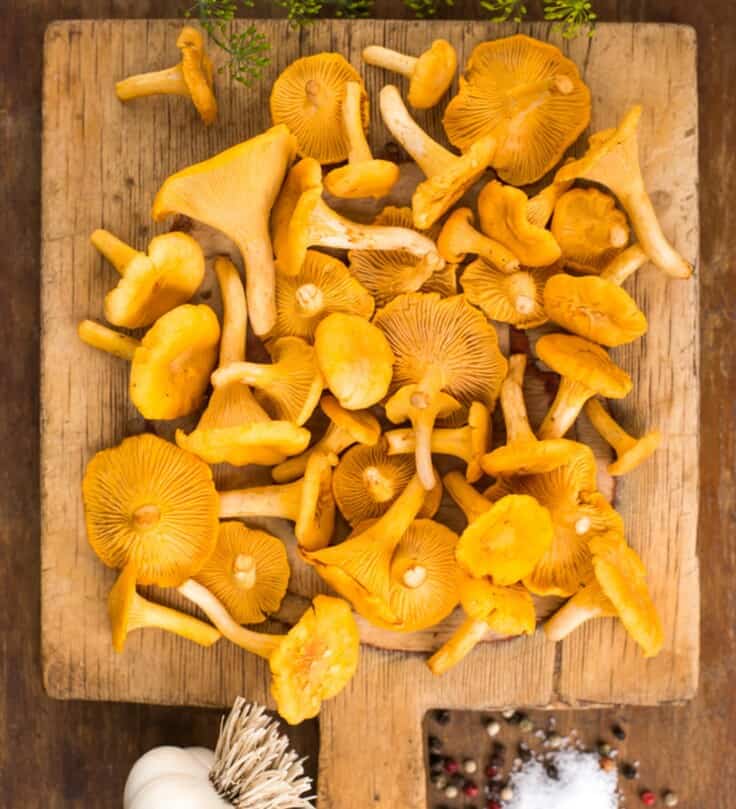
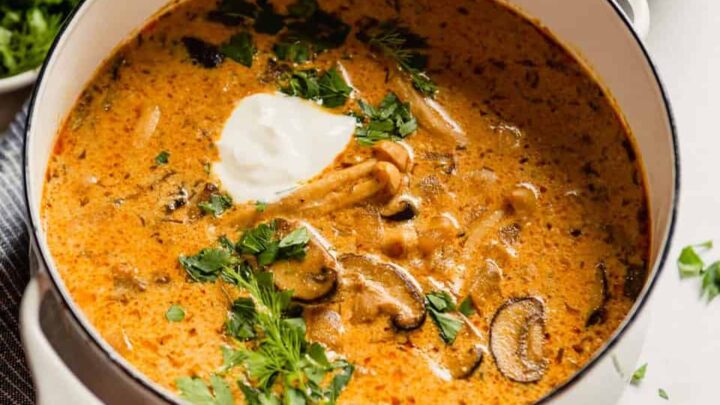
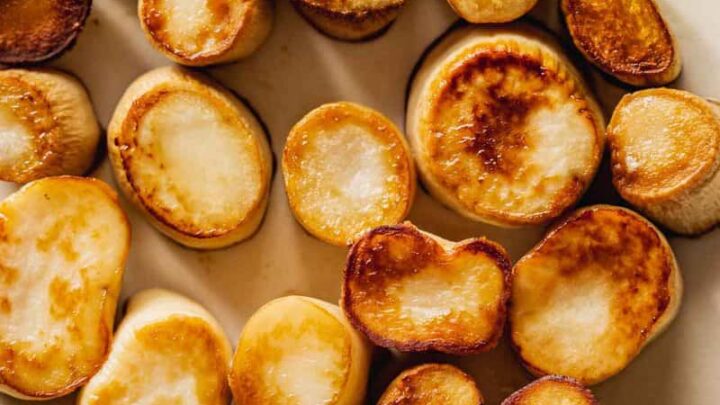
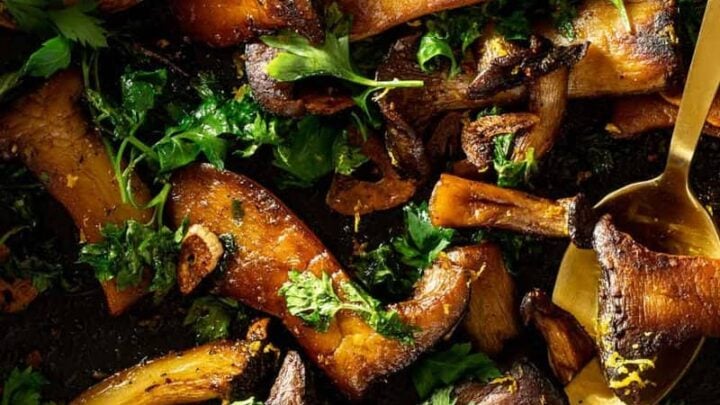
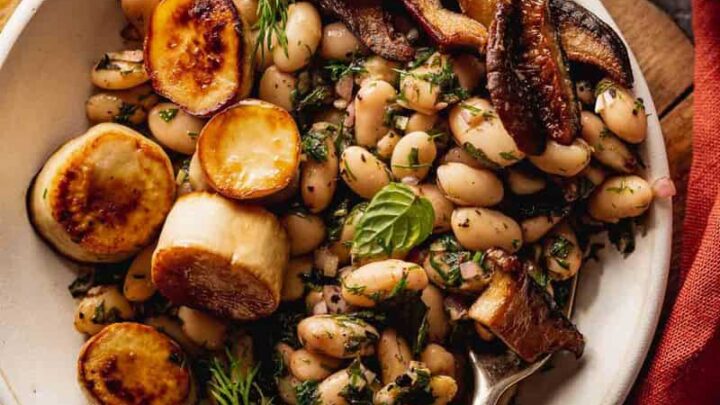
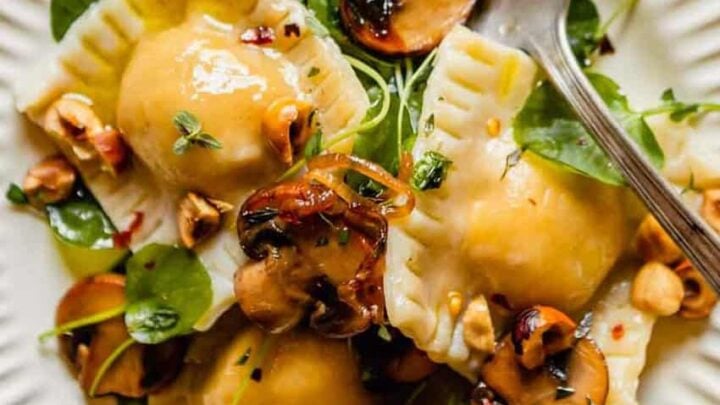
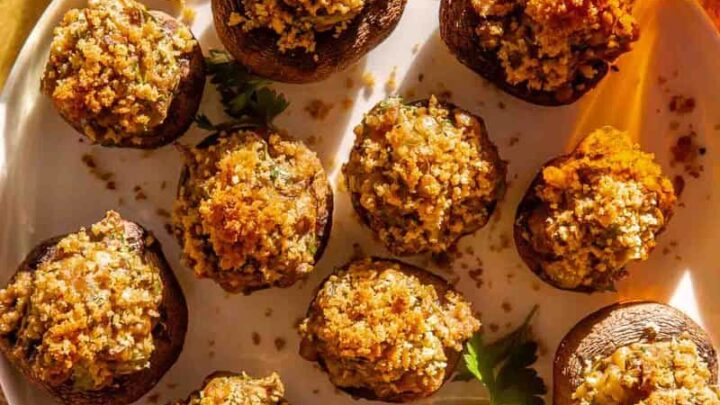
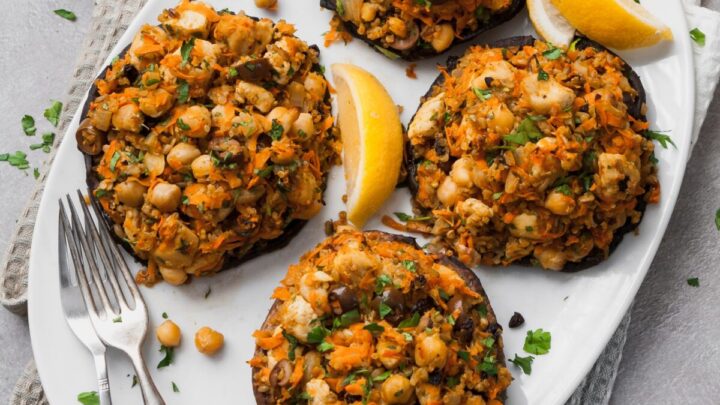
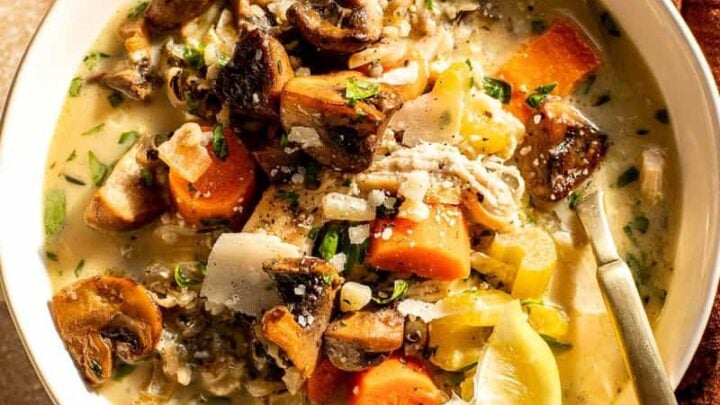
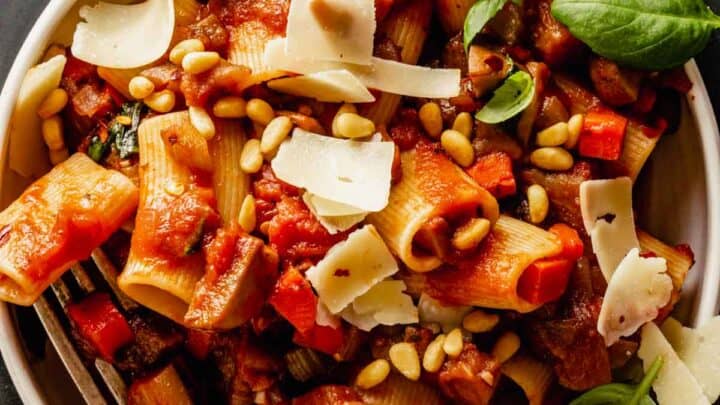
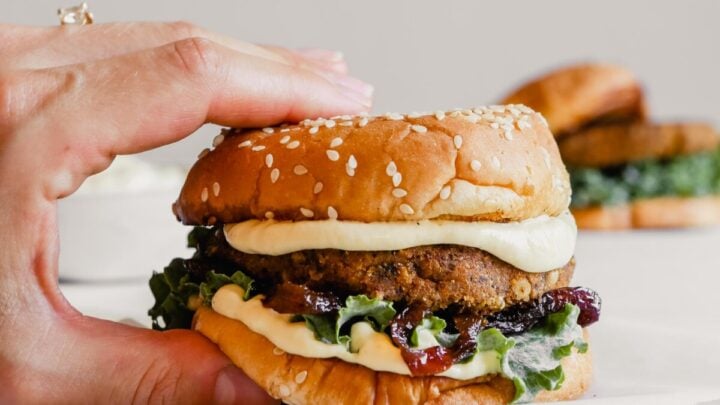
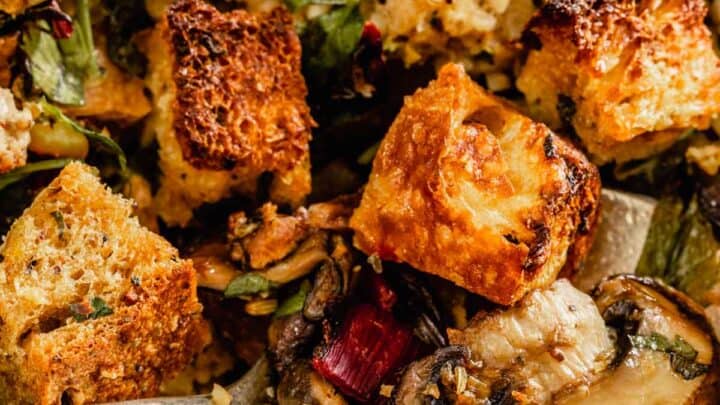
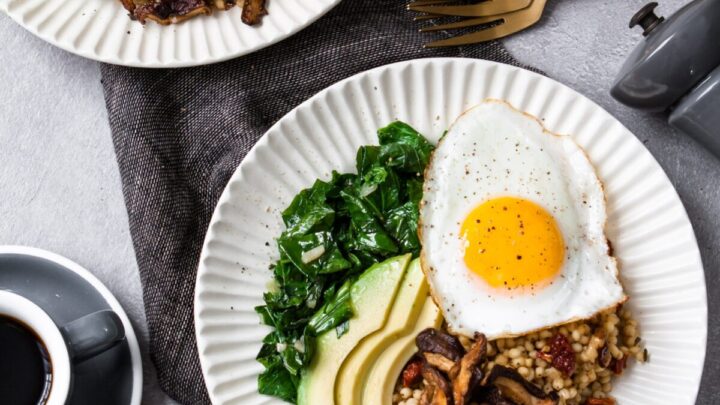
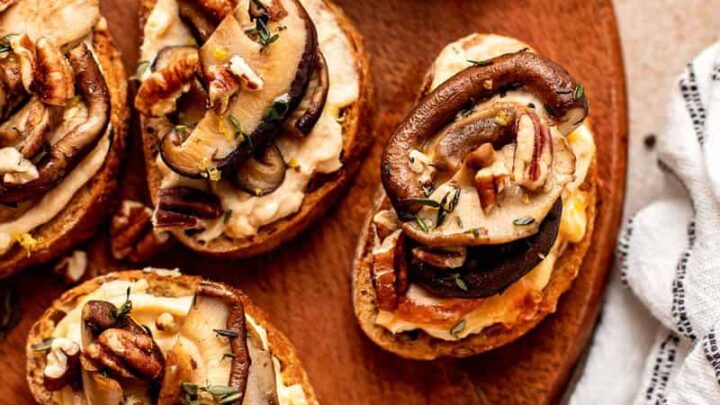
There’s a stall at our farmer’s market that sells cultivated mushrooms. The most unique variety they have is one called Lion’s Mane. This variety is amazing. Almost a dead ringer for blue crab, especially when used as a substitute for crab in Maryland style crab cakes.
Wow! I need to get my hands on some Lion’s Mane! I can’t believe it can be used in place of crab, I REALLY want to try it!
I had no idea how to use enokitake, this was so helpful! thanks!
GREAT read!!!
Thank you!! 🙂
Hello, can you please tell me what kind of shrooms these are, found in S Indiana, thank you, sincerely, Mike